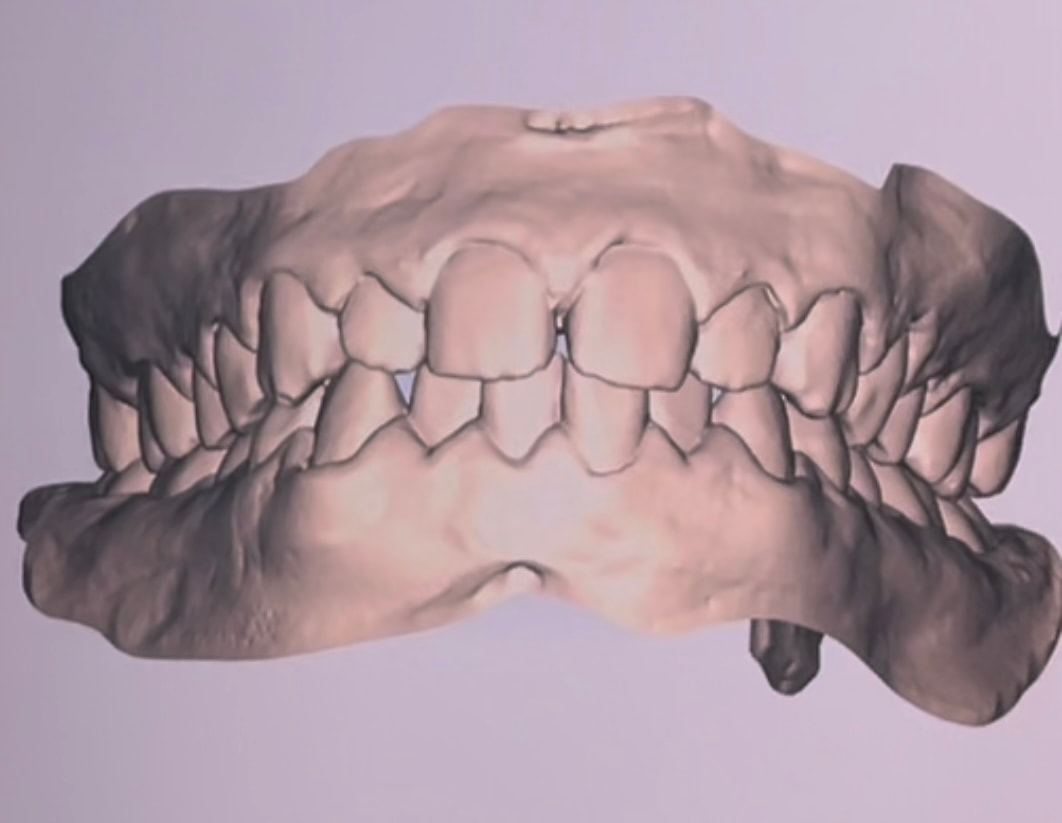Simplicity of Use Digital intraoral scanners are equipped with an ergonomic wand that easily fits and moves around in the mouth to get difficult-to-reach areas. Digital impressions can record inaccessible portions of the oral cavity and recreate intricate details that may take multiple times to capture with a conventional impression. Simply turn on the device, and wave it over the oral structures to capture the digital scan. The 3D scan is immediately displayed on a connected laptop or tablet for real-time viewing and examination. On the viewing device, the scan can be moved and adjusted to see every necessary angle. Send Scans to Lab Instantly Digital scans can be delivered to the dental laboratory or colleagues within minutes via a digital portal. The scans can also be saved indefinitely with the digital file, allowing doctors and technicians to retrieve, duplicate, send, and store their scans with a click of a button. When it comes time to replace the restoration, every set will be identical and consistent with one another. The digital workflow also affords direct access to CAD/CAM systems with subtractive and additive technologies. The storage of the CAD/CAM design allows technicians to retrieve previous files at any time, rather than having to take an impression again. Time-Saving Traditional impressions take significantly more time than digital. Chair time is increased because the dentist must consider cord or retraction paste placement and setup, mixing time, syringing, seating the tray, setting time, and evaluation. They also have to spend time cleaning the materials and transporting the results to the lab. Traditional impression-taking also runs the risk of mistakes caused by material malfunction or patient discomfort, which ultimately means having to make a remake. On the other hand, digital impressions are taken more quickly by dentists–A full arch scan typically takes 3-5 minutes to complete. There’s no need to set up materials, as the equipment is ready to go; simply power it on. Additionally, transportation time is eliminated because the digital portal allows immediate transfer of scans between the dental office and lab. Increase Patient Comfort There is evidence that patients significantly prefer digital dental scanners to conventional impressions. Intraoral scanning reduces patient discomfort associated with traditional physical impressions. The traditional route can often be uncomfortable due to sensation or taste, which can induce gagging or coughing. All this runs the risk of distorting the impression. However, the sleek design of intraoral scanning wands makes taking impressions much more bearable as it is small enough to move around the mouth and touching the oral structures is not necessary to get a detailed scan. Moreover, the use of a digital scanner also removes the risk of presenting allergies. Accuracy Multiple studies have shown that intraoral scanners are comparable to traditional dental scanning regarding accuracy. However, because an intraoral scanner can eliminate mistakes such as distortion, bubbles, or tears, digital impression scanners are ideal for getting an accurate scan the first time around. Digital also helps to prevent manufacturing faults. There are many reasons why traditional impression material may not react as expected–temperature change, expiration, etc. Such issues that may occur include material distortion, plaster expansion, deviation when mounting a model to an articulator, and casting shrinkage. Cost-Effective Lastly, digital impressions are more cost-effective than standard impressions because dentists can save on impression materials. The initial cost of intraoral scanners is expensive because implementation costs are a one-time payment. However, with the many benefits that intraoral scanners provide, the initial implementation cost can be offset within the first year. Digital scanners provide many abilities and features for assessing, designing, and communicating. The overall cost is worth it when considering all that the machine has to offer. How Can The Dental Lab Help?The Dental Lab is the premier restorative lab for digital dentistry. We provide our doctors with a FREE iTero Element 2 intraoral dental scanner when they partner with us. Doctors can receive all the technological equipment needed to get started–plus free training and technician assistance whenever needed. Visit our website to get started with digital today. Sources: Accuracy of Intraoral Scanners versus Traditional Impressions Digital impressions vs analogical impressions: when to use one and when the other Is It Cost Effective to Add an Intraoral Scanner to an Oral and Maxillofacial Surgery Practice? Keywords:
dental scanner, dental scanners, digital impressions, digital dental impressions, digital dental scanner, digital impression, digital impression scanners, intraoral scanner
0 Comments
Leave a Reply. |


